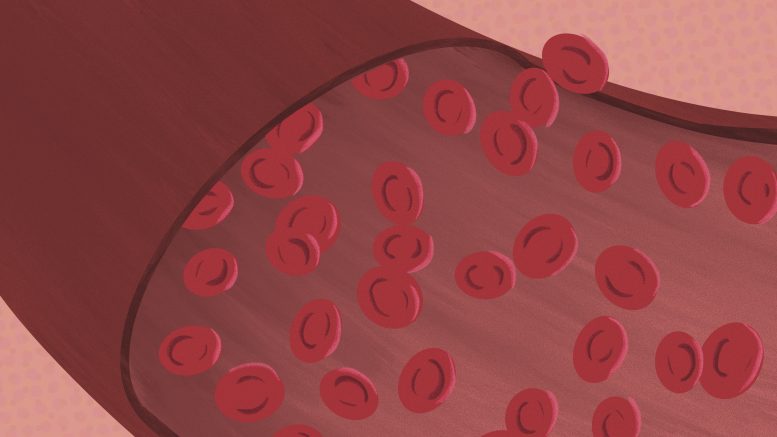Every day, the body’s hematopoietic system supplies the blood with more than a 100 billion mature blood cells. The process of hematopoiesis, or blood cell production, begins with a sparse population of originator cells called blood stem cells.
“This very small number of cells is able to divide and replenish itself, but also to produce all the red blood cells that carry oxygen throughout our bodies, all the platelets that allow us to clot when we have a cut and all the immune cells that protect us against infectious disease,” said Yale Michaels, assistant professor in the Max Rady college of medicine.
By making downstream cells that are needed for the human body to continue functioning, blood stem cells play a critical role in our health. “The way in which the single stem cell knows how to choose which one of those downstream types of cells to become is not fully understood,” Michaels said. “How does it choose to become a red blood cell instead of an immune cell? How does it choose to become an immune cell instead of a platelet?”
With the use of different genetic technologies, these are the questions that Michaels aims to answer in his research project, “exploring the gene expression programs and cell fate decisions that underlie human blood development.”
The project received over $50,000 in funding through the discovery grants program offered by the National Sciences and Engineering Research Council of Canada (NSERC).
While the focus of the grant-funded project is to solely understand the inner workings of stem cell differentiation, Michaels noted that future research may utilize that knowledge to manipulate the process and produce types of cells that could be medically useful.
Similar topics are being explored in Michaels’s lab at the U of M. The Cell Programming Lab explores both how stem cells determine what cells to differentiate into, and how to use living cells to treat diseases.
The lab focuses on “reading” certain genes that control the fate and function of a cell. This is done using genomics, the study of an organism’s entire genome, and computational modelling, which generates models to analyze and predict how a gene is used to make RNA and proteins.
Researchers can then “write” specific instructions in a stem cell’s DNA using genome engineering and synthetic biology. Genome engineering adds, removes and alters DNA in an organism’s genome to change it, while synthetic biology refers to a field of research that con structs new, artificial biological systems. These methods can modify the differentiation of a stem cell, causing it to develop into very specific cells desired by the researcher.
“Our focus at the moment is on cancer but I think, long-term, living cells can be used as medicines for a variety of different diseases, including cancer and autoimmune diseases,” Michaels said.
In a 2022 publication, he and several scientists examined how to turn pluripotent stem cells — stem cells found in early human embryos that can produce any cell or tissue needed in the body — into T cells.
T cells are a part of the immune system and fight infections. While studies show that T cells attack cancer, obtaining them from individual donors is challenging, expensive and laborious. The study defined an efficient method of turning human pluripotent stem cells into cells called hematopoietic progenitors with T cell potential.
“This new method will contribute to robust, clinically compatible manufacturing of pluripotent stem cell-derived T cell therapies,” the research article stated.
Another study by Michaels focused on the transition of cells into different states during development. These transitions are coordinated by certain molecular regulators.
Researchers engineered the state transitions of human pluripotent cells. This, they noted, “will enable numerous applications in regenerative medicine.”
“We’re interested in engineering living cells as medicines,” Michaels said. “The ultimate goal would be to be able to create safe, effective and affordable living medicines that can help patients in Manitoba, Canada and around the world.”


